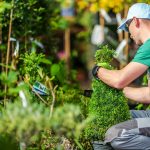Strapping is an essential packaging technique for securing goods during transport and storage. For heavy loads, it is important to use reinforced strapping techniques to guarantee the safety and integrity of the products. This article presents the different reinforced strapping techniques available for heavy loads, their benefits and applications.
Reinforced strapping techniques
There are several reinforced strapping techniques available for heavy loads, each with its own characteristics and advantages. You can find out more at https://www.lacroixnoble.fr/en/category_product/straps/.
Lire également : How to build resilience and overcome life’s challenges with confidence?
Steel strapping
Steel strapping is the strongest and most durable option for heavy loads. It is generally used to secure pallets, crates and machinery. Steel offers high tensile and tensile strength, making it ideal for demanding applications.
Composite strapping
Composite strapping is a lighter, more economical alternative to steel strapping. It is manufactured from materials such as nylon or polyester reinforced with glass or metal fibres. Composite strapping offers good tensile strength and is easy to apply.
A découvrir également : How to explore the fascinating world of astronomy and space exploration?
Plastic strapping
Plastic strapping is the lightest and most economical option for lighter loads. It is generally used to secure cartons, parcels and small items. Plastic strapping is easy to apply and remove, making it practical for occasional use.
Advantages of reinforced strapping
Reinforced strapping offers a number of advantages for heavy loads.
Enhanced security
Reinforced strapping ensures greater security for goods during transport and storage. It reduces the risk of products spilling, falling or being damaged.
Optimum protection
Reinforced strapping protects goods against shock, vibration and the elements. It keeps products well packaged and prevents deterioration.
Improved stability
Reinforced strapping stabilises loads and prevents them from moving during transport. This reduces the risk of damage and accidents.
Applications for reinforced strapping
Reinforced strapping is used in a wide range of applications.
Maritime transport
Reinforced strapping is essential for securing containers and pallets during sea transport. It helps protect goods from the often harsh conditions at sea.
Road transport
Reinforced strapping is also used to secure loads during road transport. It is particularly important for long journeys and transport over rough roads.
From semi-trailers to vans, reinforced strapping can be adapted to a wide range of transport vehicles. The application techniques are flexible, making optimum use of the space available while ensuring that loads are immobilised safely and efficiently.
Storage
Reinforced strapping can be used to secure goods stored in warehouses or shops. It protects products from dust, moisture and accidental damage.
Despite their robustness, reinforced strapping techniques are designed to allow easy access to stored goods. Specialised tensioning and sealing systems allow rapid dismantling and reassembly, facilitating loading, unloading and stocktaking operations.
Conclusion
Reinforced strapping is an essential packaging technique for securing heavy loads during transport and storage. It offers increased security, optimum protection and improved product stability. The various reinforced strapping techniques available enable us to meet the specific needs of each application.











